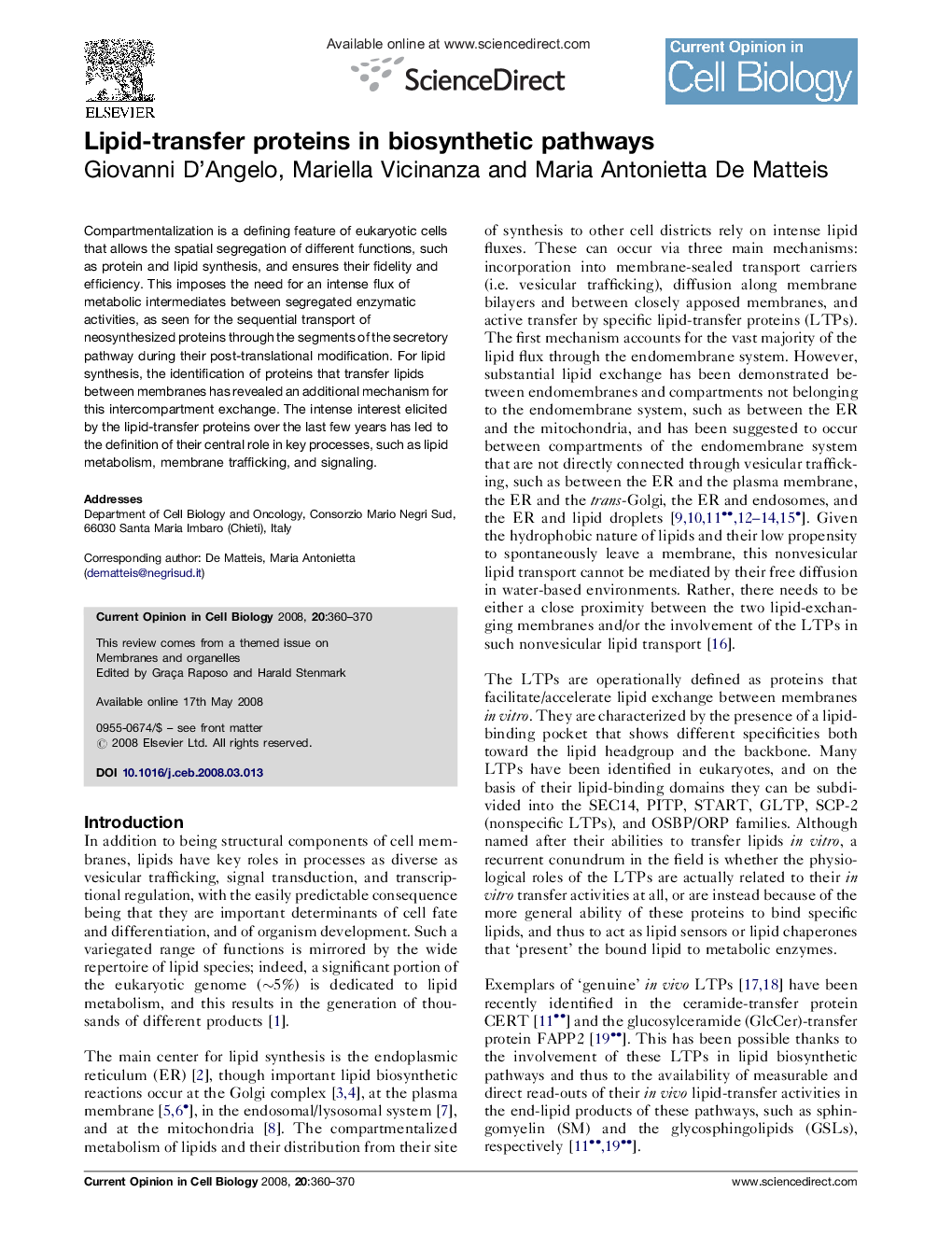| Article ID | Journal | Published Year | Pages | File Type |
|---|---|---|---|---|
| 10929378 | Current Opinion in Cell Biology | 2008 | 11 Pages |
Abstract
Compartmentalization is a defining feature of eukaryotic cells that allows the spatial segregation of different functions, such as protein and lipid synthesis, and ensures their fidelity and efficiency. This imposes the need for an intense flux of metabolic intermediates between segregated enzymatic activities, as seen for the sequential transport of neosynthesized proteins through the segments of the secretory pathway during their post-translational modification. For lipid synthesis, the identification of proteins that transfer lipids between membranes has revealed an additional mechanism for this intercompartment exchange. The intense interest elicited by the lipid-transfer proteins over the last few years has led to the definition of their central role in key processes, such as lipid metabolism, membrane trafficking, and signaling.
Related Topics
Life Sciences
Biochemistry, Genetics and Molecular Biology
Cell Biology
Authors
Giovanni D'Angelo, Mariella Vicinanza, Maria Antonietta De Matteis,
